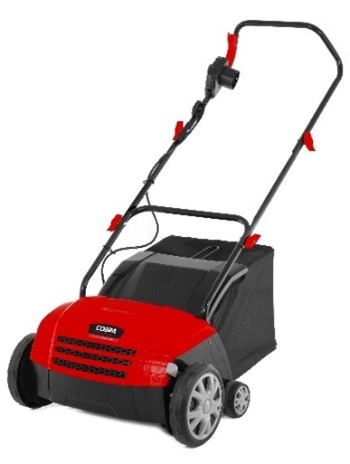British weather is notoriously rainy and unpredictable, but this last month has been filled with severe storms and heavy rainfall across the country. This type of weather can wreak havoc on gardens and landscapes so it’s important to ensure lawns are as prepared as they can be. We’ve compiled a guide to help you understand the severity of waterlogged lawns and highlight some preventative measures that will ensure your garden remains healthy and protected throughout these wetter autumn months.
The impact of excessive rainfall on lawns
When rain pours relentlessly, lawns can become compacted and challenging to manage. After long periods of rainfall, the ground can become oversaturated, and water is unable to drain away. Waterlogged soil impedes the flow of air, water, and nutrients, hindering grass root growth. Oxygen-starved roots become weaker and more prone to disease, nutrient deficiencies, and pest infestations. The damp conditions also foster the growth of fungi, causing discolouration and lasting damage. Heavy rainfall can also wash away the topsoil, exposing grassroots and leading to erosion, resulting in uneven surfaces and unattractive bare patches.
Assessing the damage
The signs of an oversaturated and waterlogged soil lawn are fairly obvious. The ground will feel squelchy and soft underfoot and there may be puddles or pools of water on the surface. Grass may also turn yellow or look wilted and limp. In the most severe cases, the lawn may be partly or fully submerged underwater.
Five preventive solutions.
The best way to ensure your lawn is protected against waterlogging is to implement some preventative strategies. By addressing the underlying causes of waterlogging and implementing these practical solutions, you can protect your lawn and avoid any severe damage.
- Aeration: Throughout the year it is essential to aerate your lawn to increase air circulation, loosen soil and create small channels that allow water and nutrients to penetrate all the way to the roots. Autumn is the best time to scarify your lawn if it is suffering from compaction, which will be noticeable if the ground feels very hard and rainwater is running off it easily. This is not uncommon after hot weather and long summers spent in the garden. Aerating your lawn will create a healthier root system so that it will manage better in periods of heavy rainfall or waterlogging. Concentrate on areas that receive the most wear and or feel particularly hard underfoot. Cobra’s SA32E Electric Scarifier and Aerator has the ability to both scarify and aerate your lawn, which will allow air and moisture to reach the soil and encourage strong, vibrant growth.
- Improve drainage: Identify areas of your lawn that are prone to flooding or pooling water. Consider adding a layer of mulch or compost to improve soil structure and drainage or create a man-made drainage channel to redirect the water.
- Create a gradient: Another way to encourage water runoff and prevent pooling is to adjust the slope of your lawn to redirect water to a different area of the garden that has better drainage or to a drain itself. If there is a particularly low-level area of your garden, fill in those spots to improve the overall water distribution.
- Plant strategically: Fill your garden with water-loving plants that thrive in really moist conditions as these will help absorb excess water during heavy rainfall events.
- Monitor watering practices: Be careful to make sure you are not contributing to waterlogging by watering grass or plants too soon after rainfall. Adjust your routine to complement natural weather conditions during the autumn months as there is typically more rain than in the warmer months.
Once you’ve implemented these preventive solutions, monitor your lawn’s progress. Regular maintenance and keeping an eye on drainage patterns will help prevent any future waterlogging issues.

